Announcing BetterLife's New CEO & Chairman of the Board, Chris Campbell

Also in this issue: 2023 National Scholarship Winners Making Time to Unplug and Reconnect
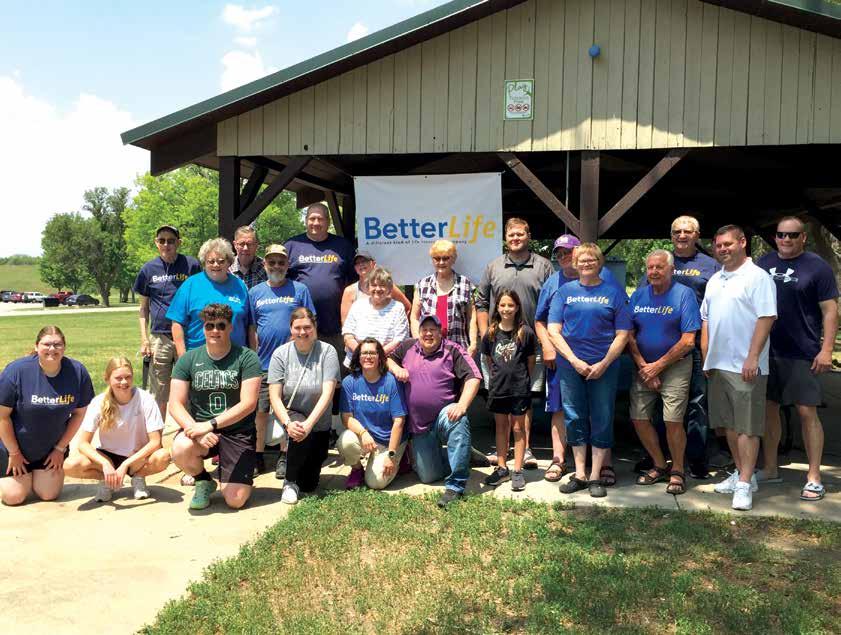

Announcing BetterLife's New CEO & Chairman of the Board, Chris Campbell

Also in this issue: 2023 National Scholarship Winners Making Time to Unplug and Reconnect

Board of Directors
Chris Campbell
Madison, WI
Daniel L. Shinnick
Mount Horeb, WI
Mary Bradley Frankfort, MI
Nancy Nelson Heykes Hazelhurst, WI
Chris Campbell CEO and Chairman of the BoardIt is a great privilege to serve as Chief Executive Officer of BetterLife to carry forward its rich 125-year history.
I want to thank Dan Shinnick for his leadership that included a successful and important merger, the introduction of our new BetterLife name, and setting the stage for a more modern, community-centered society that addresses the realities confronting our members today.
I am deeply committed to our mission to help members protect their family's financial futures, build better lives, and better their communities. Our success stems from you, our members. In choosing to protect your family with BetterLife, you benefit from secure, quality insurance solutions, give back directly to your community, and continue a common bond that has held us together for over a century.
My team's role is to unlock all our potential for better lives by presenting you with valuable insurance solutions, providing the highest quality service, and finding meaningful opportunities to give back directly to your communities.
To do this well, we need your help. Whether it's joining me in a community event this year, taking a leadership role in a local community group, giving me a call, or sending me an email, I would like to get to know you better, so we can collectively build better lives.
I look forward to meeting you soon.
Gratefully, Chris
Michael Hosek
Lincoln, NE
Duane Jirik
New Prague, MN
Maria Ferrante-Schepis McKees Rocks, PA
John T. McHugh
Sparta, WI
Brenda Stone Banger, WI
Officers
Chris Campbell CEO & Chairman of the Board
Donald M. Nieland
Sr. VP, IT & Secretary
Jenna Dunker, CPA, FLMI
Sr. VP, Finance/Treasurer
Angel Thomas
Sr. VP, Member Experience
Michelle Maffet
VP, Member Services

Phyllis Heleniak
VP, Member Direct
Dave Schlesser, CLU, LUTCF

VP, National Sales
Magazine Staff Editors
Angel Thomas
Sarah Cavalcanti
Jade Morschauser
Elizabeth Malin
Contributing Writers
Angel Thomas
Sarah Cavalcanti
Jade Morschauser
Davis Brinkmann
Hannah Berckman
Elizabeth Malin
Graphic Designer
Elizabeth Malin
Directory
Home Office
6522 Grand Teton Plaza PO Box 1527
Madison, WI 53701 (608) 833-1936 or (800) 779-1936 info@betterlifeins.com betterlifeins.com
Address Change Notice
It is very important that BetterLife keeps its member address records up-to-date. To update your address, contact us at (800) 779 -1936 or visit the Member Forms section of our website, betterlifeins.com, and complete the policyholder address change form.
The BetterLife magazine is the official publication of BetterLife, a Fraternal Benefit Society, 6522 Grand Teton Plaza, Madison, WI 53719. It is published four times annually for the benefit of members and their families. Third-class postage paid at Madison, WI.
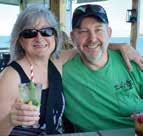

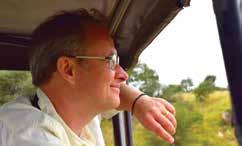
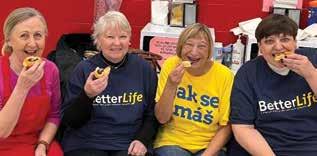
Postmaster
Please send address changes to: BetterLife, PO Box 1527 Madison, WI 53701
BetterLife's mission is to help our members protect their family’s financial futures, build better lives, and better their communities. We demonstrate our mission by providing educational scholarships to help our young members become successful. Scholarships are awarded based on service in the community, academic achievements, and financial need. Once again, this year, we're providing 58 national scholarships totaling $68,000 to well-deserving scholars.
BetterLife National Scholarships awarded include:
• One $5,000 Annual Bradley Family Scholarship awarded to a worthy BetterLife student and donated by Board Director, Mary Bradley, and her family.

• One $4,000 Presidential High School Scholarship awarded to one high school senior with outstanding volunteer service.
• Three $2,000 Leadership Scholarships awarded to outstanding members.
• Fifty-three $1,000 Annual Scholarships awarded to deserving BetterLife members.
$5,000 Annual Bradley Family Scholarship
Kaelyn McHugh | Omro, WI
Kaelyn is pursuing a degree in English with an Integrated English and Publishing Emphasis and a minor in Spanish at Minnesota State University Moorhead. She hopes to become an editor, proofreader, or copywriter with her degree to help people refine their writing skills and communicate their messages effectively.
$4,000 Presidential High School Scholarship
Mitchell Shirek | Lankin, ND
Mitchell is pursuing a degree in Farm Management from North Dakota State College of Science. With his degree, he hopes to gain more knowledge and skills associated with managing a farm — including crop marketing, reducing his economic footprint, precision agriculture skills, and learning how to be a better employer.

$2,000 Leadership Scholarship
Tahlia Moe | Stevens Point, WI
Tahlia will be attending Lawrence University pursing a Bachelor of Arts degree in government. After obtaining her degree, she hopes to be a successful businesswoman and go after her dream of becoming a real estate agent.



This year, BetterLife awarded 53 $1,000 scholarships to help support them as they pursue their educational dreams and professional plans. Here are three of our winners, along with a glimpse of how they plan to put their award to use.
$2,000 Leadership Scholarship
Andrea Sucha | Verdigre, NE
Andrea is pursuing a degree from Mount Marty University in Business Administration with a finance concentration. She hopes to use her degree to become a successful businesswoman and pursue her dream of becoming a real estate agent.
Ameera Fowler | Brown Deer, WI

Ameera is attending Southern Illinois University - Carbondale to pursue her Bachelor of Science in Child and Family Services, specializing in child development and parent education. With this degree, she hopes to help families and children of all diverse backgrounds, especially those from low-income communities. She also wants to make a difference by educating parents and families with the tools and resources needed to succeed.
$2,000 Leadership Scholarship
Kylie Magnus | Fitchburg, WI
Kylie will attend the University of Wisconsin – Madison, pursuing a double major in Conservation Biology and Spanish. She hopes to work for the US National Parks Service after college, conducting research and helping with biodiversity conservation.


Lauren Arthur | Cypress, TX
Lauren is attending Texas A&M University pursuing her Bachelor of Science in Civil Engineering. With this degree, she hopes to become a highly successful Civil Engineer and eventually start her own engineering firm.
Reynnah Ellenz | Toddville, IA
Reynnah is attending Iowa State University studying Animal Science in the pre-veterinary program. With this degree, she hopes to go to veterinary school at Iowa State. After getting a veterinarian certification, she plans on working at a small animal veterinary for a few years and then opening her own clinic.
Turn the page to see the rest of our $1,000 Annual Scholarship winners!

Caleb Ainsworth North Aurora, IL | DuPaul University
Madison Ainsworth North Aurora, IL | Grand Valley State University
Brooke Albers Lester Prairie, MN | Ridgewater College
Emily Berg South Lyon, MI | University of Wisconsin - La Crosse
Brindy Bolander Winner, SD | South Dakota State University
Eliza Carman Appleton, WI | University of Wisconsin - Green Bay
Willa Carman Appleton, WI | Winona State University
Kaylee Collins Perez Waterford, WI | University of Wisconsin - Whitewater
Carson Daly Midland, SD | South Dakota School of Mines & Technology
Jacob DiNicola Rochester, MN | Rochester Community and Technical College
Evan Dorner Luxemburg, WI | University of Wisconsin - Green Bay
Tenley Faber New Glarus, WI | University of Iowa
Jasmine Faubel Fond du Lac, WI | Marian University
Claire Franke Fond du Lac, WI | University of Wisconsin - Madison
Jadyn Georgenson Manitowoc, WI | Concordia University
Matthew Hilleman Ely, IA | Wartburg College
Grace Kleiber Greenville, WI | University of Wisconsin - Oshkosh
Kenna Konfrst Parkston, SD | Northwest Missouri State University
Emily Kotval St. Paul, MN | Minnesota State University
Orion Kunst Almond, WI | Mid-State Technical College
John Lukes Glenville, MN | Kansas State University
Summer Marske Spooner, WI | University of Wisconsin - Eau Claire
Emma Martinek Rockwell, IA | University of Northern Iowa
Sara Micanek Omaha, NE | University of Nebraska - Omaha
Annika Nelson Plymouth, WI | University of Wisconsin - Milwaukee
Ivon Owen Concordia, KS | Kansas State University
Ethan Paulsen Anamosa, IA | University of Iowa
Maisie Paulsen Anamosa, IA | University of Northern Iowa
Mya Petersen St. Cloud, WI | University of Wisconsin - La Crosse
Elizabeth Phipps Chilton, WI | St. Norbert College
Claire Pommier Hammond, WI | University of Kansas
Lily Prodoehl Kaukauna, WI | University of Wisconsin - Eau Claire
Elizabeth Ramaeker Neenah, WI | University of Wisconsin - Stevens Point
Rachael Reese Apple Valley, MN | Grand Canyon University
Faith Rhoads Williamsburg, MI | Davenport University
Samantha Saadeh Georgetown, TX | Austin Community College
Mallory Schaefer Oakfield, WI | University of Wisconsin - Madison
Samuel Schernikau Lincoln, NE | Nebraska Wesleyan University
Jadyn Schulke Waupaca, WI | University of Wisconsin - Madison
Sam Seguin Menomonie, WI | University of Minnesota
Kade Snyder Omaha, NE | University of Nebraska - Omaha
Brock Sosebee DeWitt, MI | Michigan State University
Cameron Stadler Ringle, WI | Northcentral Technical College
Alison Wagner Lansing, IA | University of Northern Iowa
Meghann Weisbach Appleton, WI | University of Wisconsin - La Crosse
Carter Wendt Fond du Lac, WI | Winona State University
Madelyn Wickershiem Appleton, WI | University of Wisconsin - Stevens Point
Samantha Xiong Appleton, WI | University of Wisconsin - Madison
Isabelle Zimmerman New Glarus, WI | University of Iowa
Life happens. Everybody has had a family-related event or emergency that was not planned for in the budget. Maybe you had to miss a week of work to take care of a sick relative, your babysitter is suddenly unable to watch the kids moving forward, or those same kids really want to go to summer camp.
One of the many member benefits offered by BetterLife is the Family Benefit. The Family Benefit provides members with up to $1,000 for costs associated with family-related events or emergencies. These events could be related to senior care, child care, extracurricular activities, family emergencies, or unexpected living costs.
Up to ten awards of up to $1,000 each are given every year (for a yearly total of up to $10,000). Members may apply each year through June 1. Third-party judges determine the recipients of the benefit. A BetterLife member can receive a lifetime maximum of three Family Benefit awards.
This year, we received 14 applications for the Family Benefit. Our 10 winners were again determined by our third-party judges.
Check out a few of this year's winners and how the Family Benefit will help them!

“
The funds will be used to help support medical expenses for my granddaughter, Lily
“This benefit will help cover costs associated with licensing school for my becoming a local licensed pastor.”
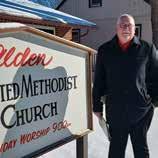
Applications for the 2024 Family Benefit will be accepted from January 1 - June 1, 2024. To apply, fill out a simple application that includes your contact information and a paragraph or two explaining how this benefit will help your family!
For more information, visit: betterlifeins.com/member-resources/ member-benefits
Reach out to the Member Engagement team with any questions regarding the Family Benefit: memberengagement@betterlifeins.com or (800) 779-1936
Cynthia Wondercheck - BetterLife Member - Farwell, NE (pictured above)." Galen Spinler - BetterLife Member - Owatonna, MNChris joins BetterLife with extensive credentials in driving business turnarounds, transformation, and growth in companies of all sizes. He has a strong foundation in strategy consulting, marketing, and driving member-centric companies. In addition to that foundation, his skill set includes managing sales, IT, and analytics, along with insurance industry experience across life, health, group, and personal and commercial lines.
Outside of the office, Chris serves on the National MS Society Board and engages with World Vision’s efforts in Tanzania. He also serves on LIDMA (Life Insurance Direct Marketing Association) and his church board. He is excited to join our mission purposed company. Welcome, Chris!
Chris was born and raised in Omaha, NE, where he still has extended family. He has been married to his wife, Amalya, for 26 years. Their daughters Helen (23) and Lydia (21) live in Indiana and Colorado, respectively. They’ll often find their way to Northern Minnesota for family gatherings.
Chris has run the Chicago Marathon twice, and while in Seattle started cycling, completing his first century (100-mile) ride. He’s an avid science fiction reader and loves cooking. He’s delighted the world-famous Madison Farmers Market will be steps from his front door.
Chris was drawn by the rich community heritage of BetterLife and its founding organizations. He also sees tremendous opportunities to serve our members better and strengthen our communities with a common bond around people helping people.

June 2023 BetterLife CEO
2017 - 2022 President & Chief Operating Officer - eFinancial
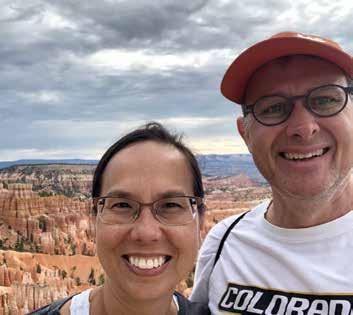
2013 - 2017 Senior Vice President of Marketing Communications - CNO Financial Group
2010 - 2013 VP, Strategic Marketing & Business Development - Bankers Life
2017 - 2022 Director, Strategy & Business Development, Allstate
2017 - 2022 Assistant Vice President, Marketing & Business Development, Institutional Markets, and Director, Strategic Planning Group, Life & Group Operations, CNA Insurance
1995 - 2001 Case Team Lead | Monitor Deloitte

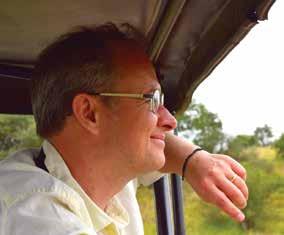
EDUCATION
• Dartmouth College, Bachelor of Arts, Government
• Northwestern University - Kellogg School of Management, MBA, Finance, Management and Strategy, Marketing
VOLUNTEER
• Board Member - LIDMA (Life Insurance Direct Marketing Association)
• Board Member - National MS Society
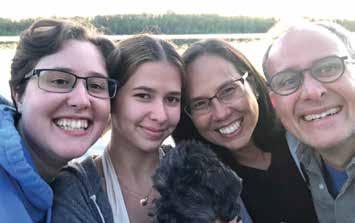 (Top left) Chris with his wife, Amalya, at Bryce Canyon, UT.
(Top right, L to R) Daughters, Helen and Lydia, dog Sebastian, and wife, Amalya, with Chris.
(Bottom left) Chris at Olympic National Park, WA.
(Top left) Chris with his wife, Amalya, at Bryce Canyon, UT.
(Top right, L to R) Daughters, Helen and Lydia, dog Sebastian, and wife, Amalya, with Chris.
(Bottom left) Chris at Olympic National Park, WA.
BetterLife Members - Prague, OK, gathered on March 12, for one of four scheduled baking days for the Kolache Festival on May 6, in Prague, OK. The Czech-themed festival was founded to celebrate the town's 50th birthday in 1952. Kolaches are sweet pastries rooted in
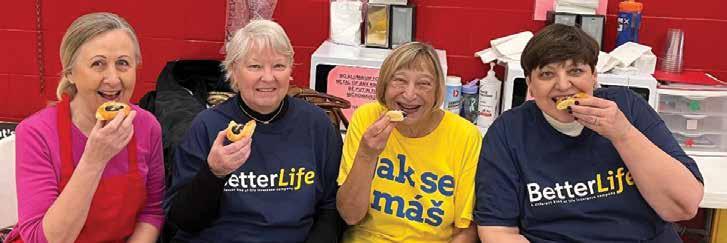
Czech culture, usually housing jam or poppy seeds. Approximately 2,000 kolaches were baked on this day. During the festival, it was estimated that there would be 30,000 attendees and 50,000 kolaches would be enjoyed during the celebration.
The patriotic spirit runs deep through our member groups. BetterLife Members - Lincoln, NE, worked together this past Memorial Day to place American flags on Veteran’s graves at Calvary Cemetery in Lincoln, NE. After the flags were placed, volunteers shared refreshments.
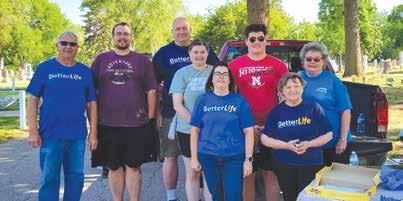 (Pictured left to right) Barbara Sands, Marjorie VanDyke, Kay Rider, and Cindy Fridrich taste-testing their delicious kolache creations.
(Pictured left to right) Barbara Sands, Marjorie VanDyke, Kay Rider, and Cindy Fridrich taste-testing their delicious kolache creations.

BetterLife Members - Fond du Lac, WI, hosted a pancake breakfast in memory of Sue Steffan on April 23. In addition to the breakfast, a silent auction was held to raise money for Old Glory Honor Flight - Appleton, WI. The breakfast was a great success, with 250 people being served in over two hours and $4,500 raised!
On March 10, 2023, BetterLife MembersSpearfish, SD, presented a check of $200 to the Spearfish Food Pantry, a nonprofit that works to ensure that community members have access to nutritious ingredients and meals.

Join Hands Day is celebrated by our member groups across the United States. BetterLife MembersBannister, MI, pose with items they created on April 29, 2023 for Join Hands Day. The items the group made were then donated to those in hospice care.
 (Pictured above) Adam Miles, Leone Geppert, a Spearfish Food Pantry volunteer, and Jim Miles smile for a photo.
(Pictured above) Adam Miles, Leone Geppert, a Spearfish Food Pantry volunteer, and Jim Miles smile for a photo.
 by Sarah Cavalcanti
by Sarah Cavalcanti
In today's digital age, communication has become faster and more convenient. From emails to text messages to social media, digital communication has revolutionized how we connect and interact. It has made staying in touch with loved ones, conducting business transactions, and accessing important information easier. However, with the rise of digital communication, there has also been an increase in phishing attacks.
Phishing attacks often employ manipulative tactics to trick individuals into disclosing confidential material, such as financial information and important passwords or convincing an individual to complete specific tasks, like wire
From: Your Trussted Bank






Re: Urgent! Your account is on hold.
transfers or downloading malware. These attacks can compromise personal and sensitive information, leading to financial loss and identity theft. It's essential to be aware of these threats and take the necessary precautions to protect ourselves while still enjoying the benefits of digital communication.
To better understand phishing attacks and how to continue to enjoy the perks of digital communication while staying safe and vigilant, we brought in resident expert and BetterLife Network Administrator, Dave Maffet, to further explore this topic.
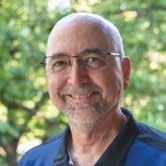
D.M. Phishing is when cybercriminals, or "bad actors," send legitimate-looking emails or texts pretending to be a reputable company, organization, or individual in an attempt to gain access to your personal information for their own financial gain. These attacks are not limited to email or text; they can also happen on social media.
D.M. Phishing attempts use social engineering, or psychological manipulation, to deceive individuals into divulging sensitive information. Manipulation tactics can involve an urgent deadline from a boss, an intimidating notice from the IRS, or a startling plea for help from a friend or family member. These phishing schemes use the power of psychological manipulation to provoke a quick and thoughtless reaction in the attacker's favor.
D.M. The only real defense against phishing is being smart with your clicking. Phishing is not a virus or malware. While a phishing attempt might want you to click on a link to get your personal information, it could also route you to a site to download a virus, malware, or ransomware.
D.M.
1.
2.
3.
You did not win anything you did not enter. If you get an email or text saying you won but never entered a contest, delete it.
If it seems too good to be true, it is.
Look for misspelled words in messages. Often these "bad actors" are overseas and attempting to communicate in another language. Due to this, sometimes they'll use terms like "you" instead of "your" and other noticeable grammatical errors.
4.
Always look at the email address from which the email was sent. It might be a name you recognize, but be sure to look closely at the address and name. If the email is from the president of your company or a reputable organization, but is coming from a Gmail account, or the name is misspelled, delete it (see example below).
Example: An email with sender info@Arnazon.com (using r and n to look like an m), or JonDoePresident@gmail.com (The president's name from @gmail versus the company email.)
D.M. You can't prevent the "bad actors" from sending emails, texts, or putting links on social media. What you can do is think before you click. If you are unsure if an email is legit, start a new email to the sender to confirm they emailed you, versus replying directly to a potential "bad actor."
D.M. Taking the appropriate precautions to avoid phishing attacks can protect your entire family. Just like having life insurance can protect your family's financial future, being vigilant online can preserve the money your family has from being stolen.
The rise of digital communication has undoubtedly made our lives easier and more connected. We can protect ourselves and our families by following simple steps such as verifying the sender's identity, not clicking on suspicious links, and taking extra precautions in instances
of suspicion. However, it's important to be mindful of phishing and understand that attacks can compromise our personal and sensitive information. It's up to us to take responsibility for our online safety and remain vigilant while enjoying the benefits of digital communication.
Giving back is an integral part of BetterLife’s history. For over 125 years, our members have been pillars of service and goodwill in cities and towns across the country. BetterLife supports our members in their journey to better the communities they call home. If there’s a community activity or project you’re interested in organizing, we want to help.
The Members in Action benefit helps kick-start a member-led service project or fundraising activity by providing inspiration, direction, and financial assistance to offset the costs of supplies and materials needed to make the project successful. Members in Action aims to make it easier for members to organize their own volunteer projects and gather family and friends to make an immediate impact on a neighbor, local non-profit, school, or community organization. Examples could be supporting and gathering donations for a local youth organization, organizing a bowling tournament to raise money for a local charity, or running a lemonade stand to help out a neighbor.
In order for a project to be eligible:
✓ The BetterLife member applying for the benefit must be an active project organizer.
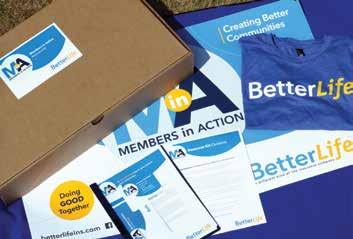

✓ The project must be either a fundraiser or service project that benefits others and cannot be self-serving for the organizer or their immediate family.
✓ Applications must be received at least 30 days prior to the date of the project.
✓ The project cannot be connected to any BetterLife member group events or activities.
✓ Benefit funds must be used for project supplies and materials or promotional items.
Starting in May of 2023, the Members in Action benefit has been revamped to offer an online application and a Resource Kit (pictured above) for project organizers! The Kit contains various resources to assist with the details of running a community event, including a Kick-Start funding card to help with some of the costs. The organizer will receive the Resource Kit within four weeks after the project is approved.
Items in the Resource Kit include:
Members in Action banner to display at the project to welcome volunteers and share goodwill with the community.
BetterLife t-shirt for the project organizer to wear.

Items in the Resource Kit continued:
Sign-in sheets to track which volunteers helped with the project. Their contact information can then be used to follow up and thank them for their help. After the event, sign-in sheets and photos from the day will be uploaded to the BetterLife website to share the project with others
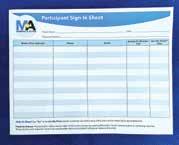
Members in Action stickers for volunteers to wear or to put on items that are being packed or donated during the project.
This Kick-Start funding card:
Thank you postcards to express appreciation for the volunteers who helped make the project successful. Kick-Start funding card to help fund the supplies, services, and promotional materials of the project. This is a single-use card that comes preloaded with a max spending limit chosen on the application (up to $200). Since the card arrives preloaded with the funds, reimbursements are no longer necessary.
• Should only be used for project supplies and materials or promotional items.
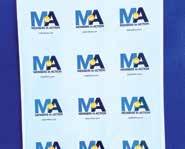
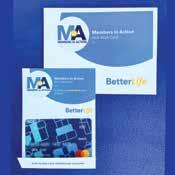
• Has a pre-set limit determined by the amount entered on the project application.
• Cannot be used as a donation.
Welcome message to read at the beginning of your project to welcome those attending and share BetterLife’s support of the project.
• Cannot be used to purchase alcohol, tobacco, firearms, or ammunition.
• Can be thrown away or recycled after your project is complete.
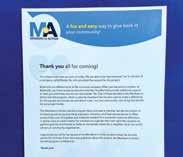
There are many ways to make an impact using the Members in Action benefit; the only limitation is your imagination!
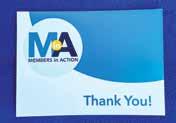
Make sure your application is submitted at least 30 days before your project and apply today!
betterlifeins.com/member-resources/member-benefits
Reach out to the Member Engagement team with any questions or suggestions regarding the Members in Action benefit at: memberengagement@betterlifeins.com or (800) 779-1936
How many times have you looked at your phone in the last hour? How about in the last 15 minutes? For many, the answer is more than a few times.
In our increasingly digital world, putting our devices down and connecting with those around us can be difficult. As life gets busier for parents and families, finding time to spend together can prove to be a challenge. According to a study conducted by Common Sense Media, 50% of youth report feeling addicted to mobile devices, and 59% of parents feel that their children are addicted to their screens. An astounding 77% of parents feel that their children are distracted by devices when they are together as a family at least several times a week. Where has this addiction come from? How do we get unplugged and reconnected, in person, with our loved ones? While there is no right or wrong solution, you can understand how technology impacts us and our families and find ways to reduce screen time.
What is dopamine? Dopamine is a neurotransmitter in the brain that alerts other parts of our brain when we feel emotions like happiness, pleasure, or joy. Many studies have shown that dopamine increases when we use our devices. Instances like connecting with our families on social media or reading a heart-warming story on a news website are only some of the ways that our devices can activate dopamine. Even receiving a notification can cause dopamine to alert our brains.
While not everything we see on our phones, computers, or tablets triggers dopamine, over time, as we are exposed further to these instances that do, our brains begin to associate our devices with these feelings of happiness. And as
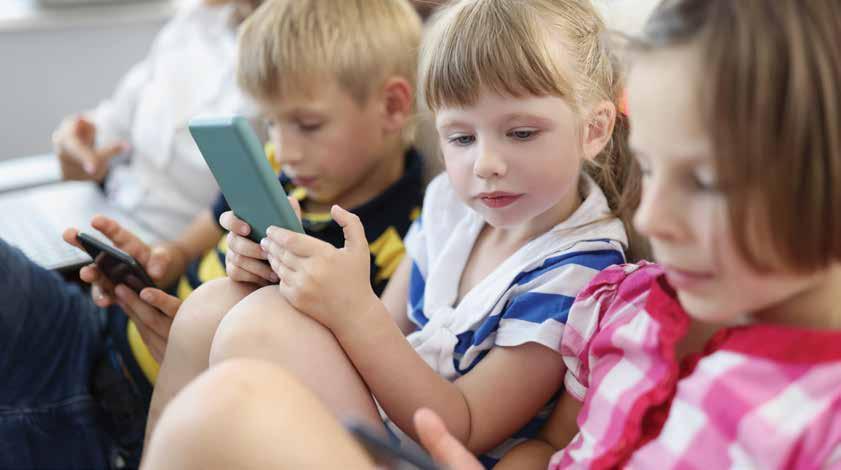
a consequence, we begin to turn to them when we need a dopamine boost.
By nature, humans are social animals. Devices have made it easier than ever to connect with others. From finding an old friend on Facebook to watching a review of a new product on YouTube, our technology helps us connect with others in ways we have not always been able to. Our social nature allows humans to feel less alone, learn from others, and generally live a happier life.
Between endless emails, texts, and phone calls, putting our devices down and being present can seem impossible. However, disconnecting has many benefits. Research shows that it promotes a healthier work-life balance, reduces anxiety, and can reduce the risk of health issues like obesity, poor sleep, and poor posture.
The first step to being unplugged can be as simple as turning off email notifications while spending time with family. One of the best ways to be successful on your journey to becoming more unplugged is to be realistic with your goals. Starting small, like putting your phone down 30 minutes before bed, can be easier to attain at the beginning of your journey. Then, as that becomes easier, try putting your phone down one hour before bed. We can get discouraged when we do not see progress in our goals, which can be disappointing and lead us to give up altogether.
One way to understand how much time you spend on your devices is to pay attention to your usage. Some devices, like iPhones and Android phones, can track your screen time automatically. You may be surprised to see the results. Tracking your screen time can be a great tool to reassess the amount of time spent on your devices.
When it comes to spending time with family, there are some simple ways to ensure everyone is engaged. For some, it is challenging to put devices down, so it may be easier to start small, like having a screen-free dinner. Encourage conversations by asking funny “would you rather” type questions or diving a little deeper with a check-in with each person at the table. Check-in questions could look like “What was one thing you accomplished today?” or “How are you feeling about today?” By leading an engaging conversation, you can keep interest in the conversation. Another way to promote a screen-free meal is to stack all devices in the middle of the table, and the first person to reach for theirs has to complete a chore — like washing dishes, or helping to clean the table.
As summer winds down, it can be a great time to set expectations for the new school year. It is important to keep in mind that for some students, the start of a new school year comes with many changes and can be anxiety-inducing. So, introducing new expectations should be done slowly.
Every family is different and unique, and the needs of each can vary greatly, so it could be best to discuss these expectations as a family. Here are some ideas to help your students disconnect this school year:

1. Set a realistic daily screen time limit, and stick to it. This goes for parents, too!
2. Do not allow screens for a certain amount of time before bed.
3. Create “phone-free” spaces.
4. Monitor the content that is consumed, or audit the apps currently on devices. If an app or website consumes a lot of time in the day, consider removing it from the device. Many devices and kid-friendly apps have parental controls to help ensure your child only sees age-appropriate content.
There are many ways to spend time unplugged, so finding what works best for your family is crucial. One way to be successful is to create these goals as a family so that everyone can feel heard and expectations are clear. The transition can be difficult, and starting changes early can help your family adjust.
Becoming unplugged is a process and can take time for all family members to adapt. By reminding yourself and others of the benefits and that you are all in it together, spending less time on devices seems more attainable for a healthier family and a healthier you.
Dancing has been a part of the human experience since ancient times, and chances are, you’ve probably busted out a move or two. Have you ever wondered though how some wedding reception staples got their start? Here’s a look at some popular dances in the US and how they became an essential part of American culture.
The earliest known historical records of dance are cave paintings in India that date back to about 8000 BCE. Early dances are thought to have been religious in nature, and in ancient Greece, dance was incorporated into Dionysus (wine god) celebrations and Olympic rituals.
Dance throughout Asia has a long and rich history, with Hindu dance performances going back millennia. Chinese dance dates back at least 3,000 years, and these ceremonial and folk dances lived on as they were adapted for performance at court.
In Europe, the folk dances of the middle ages evolved into formal ballroom dancing, moving into the royal court at the beginning of the Renaissance. Dancing masters taught the upper classes the proper steps for court dances.
Social dances began to focus on two-person dancing moving into the early nineteenth century.
In the 1930s, swing, a type of jazz music, became increasingly popular, spurring numerous types of swing dances. Lindy Hop became a prevalent form in the late 1930s and was so popular that a group of chain dance studios decided to create a more formalized version that they could teach. They added more structure to the Lindy Hop and created what is known today as East Coast Swing.
Meanwhile, Dean Collins, an American dancer and choreographer, moved from New York to California and brought with him the Lindy Hop to the west coast. While teaching his version of swing dancing in California, the dance changed shape due to its isolation from the East Coast studios and eventually became what is known today as West Coast Swing. This style of swing dancing is not as formalized as East Coast Swing and has had many influences over the years, including country dancing and the hustle.
Swing dancing is still popular today, with many communities hosting regular social dances, lessons, and workshops. Want to learn how to swing dance? A quick Google search will likely find a studio near you!

Another popular partner dance is the polka, and if you’re from the Midwest, you might be familiar with it. The polka first appeared in Bohemia, now the Czech Republic, in the 1830s. There are conflicting stories about its origins. Some say it was created by a peasant girl named Anna Slezakova and recorded by her music teacher Josef Neruda, while others say it evolved from the waltz and was a rebellion against the aristocracy. Regardless, its popularity quickly swept across Europe in the mid-19th century. As Europeans began to immigrate to the US, they brought with them the polka, which quickly became a part of mainstream American culture. As time went on, central European immigrants maintained the popularity of the dance.
Styles of the polka from various countries merged and created new styles over time. Chicago and Cleveland became the two major polka centers within the United States. Polka music became especially popular after WWII due to soldiers’ exposure to European traditions overseas as well as the relocation of Polish refugees and other European immigrants to the US. This led to the creation of many new polka songs in the decades following WWII, and the dance continued to maintain its popularity. Today, polka dancing continues to be popular and is one of the only dances from the 19th century that have survived to the present day.
What is now a staple at school dances, country hangouts, and weddings alike, line dancing quickly grew in popularity in the 20th century. The exact origins of line dancing are unclear, but modern line dancing is thought to have originated from dances brought to the US by European immigrants in the 1800s. What is today known as country-western dance eventually evolved from these dancing styles. As schools in the US began to incorporate folk dancing into physical education, folk, and country dancing began to grow in popularity.
But what makes a dance a line dance? A line dance involves a group of people following a repeating step sequence while arranged in one or more lines/rows. One of the first true line dances was the Madison, created in Columbus, Ohio, in 1957. It was eventually picked up by The Buddy Deane Show and other dance shows, which spread its popularity. During the 1970s disco era, numerous popular line dances were choreographed to disco songs, such as the LA Hustle and the Electric Slide. With the 1980 release of Urban Cowboy, line dancing continued to grow in popularity, as did country music and Western culture. Many line dances were created to country songs in the 1980s, and this trend continued into the 1990s with the popularity of Brooks & Dunn’s cover of "Boot Scootin’ Boogie" and Billy Ray Cyrus’ "Achy Breaky Heart."
So now that you know the history behind these popular dances, it’s time to try them out for yourself! Scan the QR codes below to learn the steps.
How to Polka: Popular Line Dances (Beginner Dance Tutorial): Boot Scootin' Boogie Line Dance Tutorial:
* History of Dance: Universal Elements and Types of Dance, MasterClass ** Swing Dance History – East Coast Swing vs. West Coast Swing, West Coast Swing Online (YouTube) ‡ The Rebellious, Scandalous Origins of Polka, JSTOR Daily; The History of Polka, czechcenter.org; Polka Dance Guide: How to Dance Polka, MasterClass † Line dance, Wikipedia
How to Swing Dance | East Coast Swing: How to Swing Dance | West Coast Swing:
As part of Chris' orientation to BetterLife, members will have a chance to meet him during member events. Here are a few upcoming events where you can expect to see him:
• Saturday, August 19: Lincoln, Nebraska - State Meeting
• Saturday, September 23: Cadott, Wisconsin - State Meeting
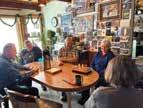
• Saturday, October 7: Yukon, Oklahoma - Saturday Night Polka Dance
• Sunday, October 8: Dallas, Texas - Czech Festival
Please continue to inform us about your events, and be sure to keep an eye out for Chris!
At BetterLife, supporting your community is what we do. But what does community mean to you? If you were to show someone a photo of your community, what would it look like? Join us in celebrating and sharing our communities through our photo contest! Winners will have their work featured in the BetterLife magazine and on our social channels.
Photo submissions are due by Friday, September 1, 2023, via the member photo form at bit.ly/3RvKL0h or scan the QR code.
Please enter “Photo Contest Submission” in the “Activity Name” field.
All photos must be original work taken by the entrants. No third party may own or control any materials the photo contains, and the photos must not infringe upon the trademark, copyright, moral rights, intellectual rights, or rights of privacy of any entity or person. By entering the contest, entrants agree that photos submitted can be used by BetterLife for advertising purposes.
On June 3, 2023, BetterLife Members - Western, NE, member Debra Polacek used the Members in Action benefit to support the 47th Annual South Central Czech Festival in Hastings, NE. The project brought together individuals from all walks of life to enjoy Czech culture, and $1,500 was raised for the South Central Nebraska Czech chapter. The funds will be used to support local scholarships, charity groups, and other local institutions. It was a day filled with traditional food, music, dancing, baking demonstrations, and fun!

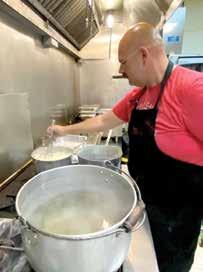
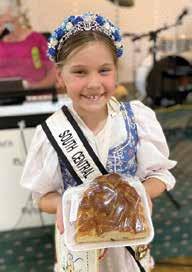

The Members in Action program was an instrumental part of the project's success. Debra had this to say about
the benefit: "The Members in Action program is a great way to support and promote your projects. The online application is simple to complete, and the directions are easy to follow. The new Resource Kit came with all the items I selected on the application, including the KickStart funding card. The money was used to purchase part of our food supplies to make the authentic Czech meals served at the festival. I want to thank BetterLife for the $200 to help with our 47th annual Czech Festival!"
For more information about the Members in Action benefit, turn to page 14!
(Pictures above) On June 3, 2023, the 47th Annual South Central Czech Festival took place in Hastings, NE. The event was organized by Debra Polacek.BetterLife says a warm goodbye to Craig Van Dyke with his decision to step down from his position as President and Chief Investment Officer as of June 30, 2023. We remember all the great things he brought to our organization, and his past accomplishments. Craig cared very much about the members, agents, and Home Office staff. He always thought about what was most important for the company. He was a great steward of the members’ money, evidenced by the asset growth achieved during
his time before and after the merger. Craig knew the right moments to add fun and humor to his work. He even shaved his head on two fundraising occasions that helped raise over $20,000. Craig got involved and participated in fraternal events as a guest and volunteer.
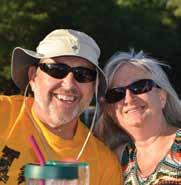

Thank you Craig for your dedication over the past 20+ years. You have left a positive and lasting impact. All of us at BetterLife extend heartfelt wishes of good luck!

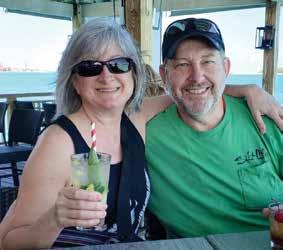
• Started as Treasurer at Western Fraternal Life on February 1, 2000
• Became Senior Vice President and Treasurer in 2007
• Elected as the 11th president of Western Fraternal Life in 2013
• Established the WFLA Education and Charitable Foundation. Raised over $100,000 used for scholarship funds

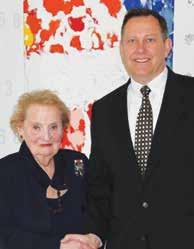
• Successfully led the merger of National Mutual Benefit and Western Fraternal Life on January 1, 2021
• Since the establishment of BetterLife, assets have grown from $143 million to $622 million
• Executed an annuity reinsurance transaction that increased BetterLife's surplus by 25%
scholarship community helping giving impact
caring betterlife different company better
friends insurance building protect family
members kind life fun
BetterLife
Black cats themselves are not a specific breed. Instead, they're simply a fur color that spans various cat breeds. That means they come in all types of personalities and physical appearances. Many black cats can be found among the friendliest cat breeds! As many as 22 recognized breeds can have solid black coloring, but the only all-black feline is the Bombay cat.
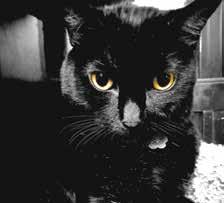
Take a picture of this completed BetterLife Fun page and upload it to: bit.ly/3RvKL0h. Be sure to include your name and address for a chance to win a prize. Submission deadline is September 1, 2023.
